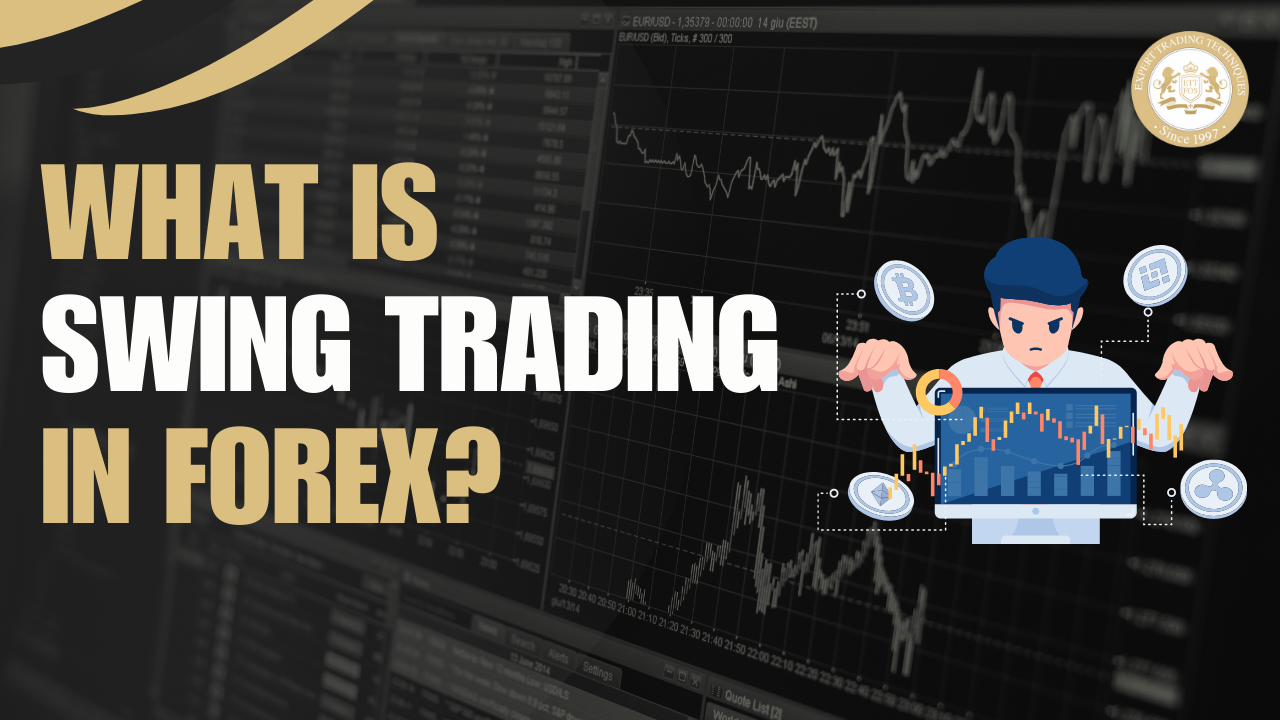
Think back to a time when you were waiting for the perfect moment, whether it was waiting for a sunset, catching a glimpse of a rare bird, or finding that elusive parking spot. Swing trading in forex is a bit like that, it’s about finding and seizing those perfect moments in the market.
If you’ve ever felt overwhelmed by the constant rush of day trading or the long wait of position trading, swing trading might just be what you’re looking for. It’s like finding a sweet spot in the middle, where you can take advantage of price movements over a few days or weeks. Rather than diving into every tiny market fluctuation or holding onto trades for months, you focus on capturing the bigger, more predictable swings.
So, without furthur delay let me tell you all about swing trading and how it might be a great fit for your trading style. In this article, you’ll find everything you need to understand and potentially embrace swing trading. If you’re curious about capturing those profitable market moves without being glued to your screen all day, trust me you’re in the right place.
Also Read: Techniques to Manage Emotions in Forex Trading

Swing trading in forex is all about capturing short- to medium-term price movements. Unlike day trading, where positions are closed within the same day, swing traders hold onto their trades for several days or weeks. The goal is to profit from “swings” or trends in the market, buying low and selling high or the other way round. As a swing trader, you look for trends and price patterns that suggest where the market might move next. You enter trades when you think a price swing is starting and exit when you believe it’s ending. You’re not trying to profit from every small price change but rather from the more significant shifts that occur over a short to medium time frame.
Also Read: What Is Energy Trading
Swing trading is all about catching those juicy price swings in the forex market. To make it work effectively, you need to follow a few key principles:
First and foremost, you need to spot the trend. Is the market generally moving up, down, or sideways? Swing traders look for trends and aim to trade in the direction of that trend. They use charts and indicators to help identify these trends and potential turning points.
This involves studying charts and patterns to predict where the price might go. Indicators like moving averages, RSI, and MACD can help you decide when to jump in or out of a trade. It’s like using a map to navigate through the waves. Traders enter positions when they see a trend beginning and exit when they believe the trend is nearing its end. This often involves setting up specific entry and exit points based on technical signals.
This is crucial. You need to manage how much you risk on each trade to avoid big losses. Setting stop-loss orders helps limit your losses if things don’t go as planned. This helps manage risk and ensures that a single bad trade doesn’t wipe out profits from other trades.
Swing trading isn’t about making quick gains. It’s about waiting for the right moments and sticking to your plan. Sometimes the best move is to wait for the right wave rather than rushing to catch any wave that comes along. Sticking to your strategy and not letting emotions drive your decisions is essential for success.
Also Read: Psychological Traits of Successful Traders

Swing trading isn’t just about catching random waves; it involves using specific strategies to maximize your gains. Here are some common strategies that experienced traders use:
Trend Following strategy is like sticking with the current wave’s direction. If the market is trending upwards, you look for opportunities to buy. If it’s trending downwards, you look for opportunities to sell. You’re riding the trend rather than fighting against it, aiming to catch the middle of the wave for the best ride.
Swing Trading with Moving Averages are like the safety rails on a rollercoaster, means they help you see where you’re going. Traders use them to smooth out price data and spot trends. For example, when a short-term moving average crosses above a long-term one, it might signal a buying opportunity. Think of it as getting a heads-up on which direction the market might be moving.
Price Action Trading is all about reading the market’s “body language.” Instead of relying on indicators, you look at price patterns and movements directly. Patterns like pin bars or engulfing candles tell you a lot about where prices might go next. It’s like learning to read the waves by watching their shape and movement.
You can understand Support and Resistance Levels by imagining that you’re surfing and there are certain points where the waves start to break or calm down. These are your support and resistance levels. Support is where prices tend to stop falling and might start to rise, while resistance is where prices might stop rising and start to fall. Knowing these levels helps you decide when to enter or exit trades.
Also Read: Common Terminologies Used In Stock Market
Swing trading offers several notable advantages. One of its biggest perks is flexibility. Unlike day trading, which demands constant screen time and quick decision-making, swing trading allows you to manage trades over a few days to weeks. This makes it easier to fit into a busy schedule, as you don’t need to monitor the markets constantly. Additionally, swing trading can be profitable by capitalizing on short- to medium-term price movements. With fewer trades compared to day trading, you also benefit from lower transaction costs, which can improve overall profitability.
However, swing trading isn’t without its drawbacks. One significant risk is exposure to overnight market moves, which can lead to unexpected losses if the market shifts against your position while you’re not actively monitoring it. Swing trading also requires a great deal of patience and discipline. It’s not a method for instant wealth; rather, it involves waiting for the right setups and sticking to a trading plan. Furthermore, since swing traders are not as active as day traders, they might miss out on short-term opportunities that could be seized by those who trade more frequently.
Let me show you the table to make you understand in a convenient manner.
| Advantages | Disadvantages |
| Flexibility: Trade over days or weeks, not glued to screens. | Risk of Overnight Moves: Prices can move against you while you’re away. |
| Potential for Profit: Capitalize on short- to medium-term trends. | Requires Patience and Discipline: Not a quick profit method; needs waiting and sticking to a plan. |
| Reduced Transaction Costs: Fewer trades lead to lower costs. | Potential for Missed Opportunities: Short-term moves might be missed. |
Also Read: Best Trading Course for Your Trading Style
Swing trading involves using a range of tools and indicators to make informed decisions. Think of these tools as your navigational aids for the forex market. They help you spot trends, pinpoint entry and exit points, and manage your trades effectively.

Swing trading isn’t a one-size-fits-all approach; it comes in various flavors, each tailored to different styles and market conditions. Understanding these types can help you choose the one that best fits your trading strategy.
It is like riding a wave that’s already in motion. In this approach, you identify the direction of the current trend and look for opportunities to trade in that direction. For example, if the market is trending upwards, you buy when the price dips, aiming to profit from the next upward movement. It’s about catching the momentum and riding it as long as it lasts. This is one of the top trading indicators pro traders use.
It is a bit like betting against the current tide. Here, you look for signs that a strong trend might be running out of steam. For instance, if an upward trend is showing signs of weakening, you might decide to sell, expecting a price pullback or reversal. This type of swing trading can be riskier but potentially rewarding if you spot the right turning points.
It involves trading within a defined price range. When a currency pair is bouncing between a support level and a resistance level, you buy at support and sell at resistance. This strategy is useful when the market isn’t trending but rather moving sideways.
It focuses on catching the price movements when a currency pair breaks out of its established range or trend. You look for moments when the price breaks through significant support or resistance levels. This can signal the start of a new trend, and entering early can be profitable as the price gains momentum.
You Might Want to Be a Swing Trader If:
Also Read: How Can I Recover My Lost Money from Forex
In swing trading, managing risk is crucial to protect your investments and ensure long-term success. Think of risk management as your safety gear which are essential for navigating the ups and downs of the market without taking on unnecessary risks.
It is one of the most effective ways to manage risk. A stop-loss order automatically sells your position if the price moves against you by a set amount. This helps limit your losses and prevents a single bad trade from hurting your overall portfolio. Imagine it as your safety net, catching you if a trade doesn’t go as planned.
This means deciding how much of your capital to risk on each trade. It’s important to calculate this carefully to avoid putting too much money into a single trade. Think of it as deciding how much weight you can safely carry; if you load up too much, you risk toppling over.
Lastly, avoiding overtrading is crucial. Swing trading requires patience, and constantly jumping in and out of trades can lead to unnecessary losses and increased transaction costs. Stick to your trading plan and make sure each trade is well thought out, rather than trading on impulse.
Swing trading can be a powerful strategy for those who want to capitalize on short- to medium-term price movements in the forex market. It offers flexibility, allowing you to trade over days or weeks without needing to watch the market constantly. By understanding and applying key principles, such as identifying trends, using technical analysis, and managing risks, you can navigate the market more effectively.
However, like any trading strategy, swing trading has its challenges. It requires patience, discipline, and a solid plan to avoid common pitfalls like overtrading and unexpected market moves. With the right tools, indicators, and risk management practices, swing trading can offer substantial opportunities for profit while fitting into a balanced lifestyle.
If you’re ready to take the plunge and explore swing trading further, remember that success comes from both understanding the mechanics and adapting your strategies to the ever-changing market. Keep learning, stay disciplined, and you might find swing trading to be a rewarding approach to navigating the forex market.
Also Read: How Can Traders Use Fibonacci Retracement Levels
Swing trading typically involves holding trades from several days to weeks. Traders often use higher time frames, such as 4-hour or daily charts, to identify trends and potential trade setups.
The amount of capital needed varies, but having sufficient funds helps manage risk and absorb potential losses. A common starting point is $1,000 to $5,000, but more capital provides better flexibility and risk management.
Common mistakes include overleveraging, ignoring risk management, and failing to adhere to a trading plan. It’s crucial to follow a disciplined approach and avoid emotional decision-making.
Yes, some traders blend swing trading with day trading or other styles to diversify their strategies and adapt to different market conditions.
Choose a broker that offers low spreads, reliable execution, and tools suitable for swing trading. Look for brokers with good reputations and positive reviews.